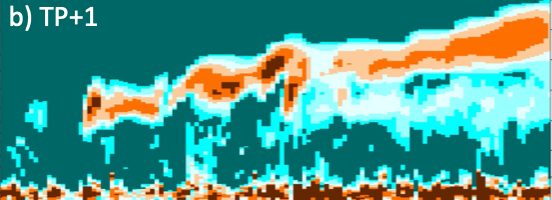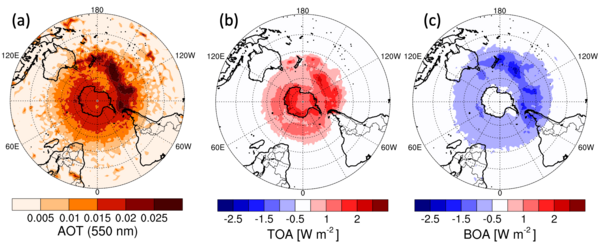Climate change is expected to increase the risk of bush and forest fires. In addition to the risks to air quality, ecosystems and infrastructures, the resulting smoke clouds can affect the Earth’s radiation budget and cloud formation. In particular, fires that trigger high-level pyroconvection due to intense heat can cause smoke particles to reach the upper troposphere. There, due to long residence times over many weeks, they can trigger a radiative forcing comparable to the effect of volcanic aerosol.
During the huge Australian wildfires in late 2019 to January 2020, massive smoke clouds were lifted as high as the lower stratosphere by pyrocumulonimbus convection triggered by the heat of the fires. Subsequently, the aerosol was transported eastward for thousands of kilometres and could be detected, for example, with ground-based lidar measurements in Punta Areans, Argentina, at altitudes of up to 20 km. The effects of such an increased aerosol load in this region, which normally has only low aerosol loads, are being investigated at TROPOS with regard to the radiation effect of the carbonaceous smoke aerosol.
The dispersion and radiative effects of fire aerosol were studied using the global aerosol climate model ECHAM6.3-HAM2.3 (resolution T63, 47 layers). Here, emissions from biomass burning are given by daily satellite-based estimates from the Global Fire Assimilation System. Since the horizontal model resolution is too coarse to explicitly resolve convection, the injection height of Australian fire smoke for the known pyrocumulonimbus events is set at the height of the tropopause (about 14 km) and varied in sensitivity studies. The sensitivity studies show how the height of fire injection affects the evolution of the smoke plume, but also the role of radiation-induced self-lifting.
According to the model, the 2019/20 Australian wildfires significantly disrupted the Southern Hemisphere radiation budget. Due to large transport heights relative to clouds and a long lifetime of smoke particles in the stratosphere, the solar irradiance at ground level decreased by more than 1 W m-2 for the Southern Hemisphere on average from January to March 2020, which is roughly equivalent to the short-term cooling caused by a large volcanic eruption, while the smoke layers experience a significant warming due to absorption of solar radiation.
Given the recent series of extreme wildfires around the world and their likely increasing frequency in a changing climate, pyroconvection needs to be given greater consideration in global climate models.


